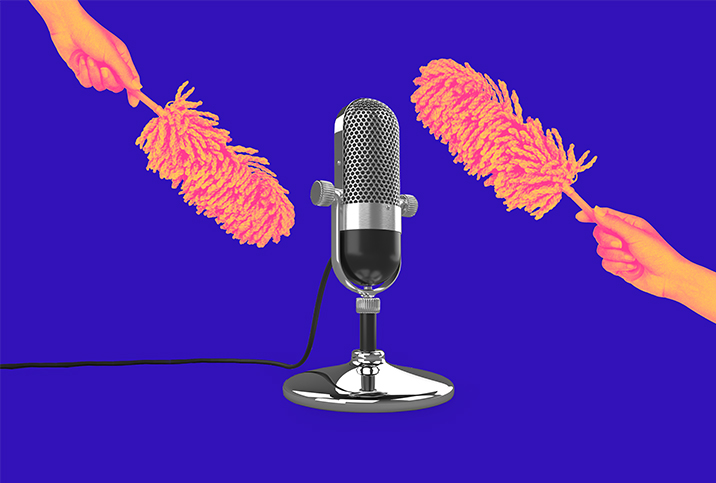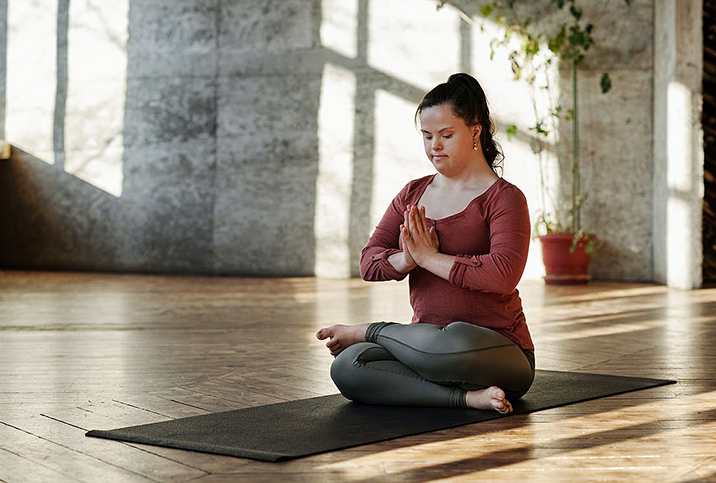ASMR's Spine-Tingling Sensations Can Relax—And Excite—Listeners

Senses are powerful tools, receptive to stimuli in the environment. Depending on the stimulus type, the body experiences automatic responses, which can be equally pleasant or distressful—and different people might experience either or any of a range in between, even when presented with the same stimulus.
On the pleasant end is autonomous sensory meridian response (ASMR), which relies on hearing—and sometimes sight—to produce a reaction that's captivated millions of people on TikTok, YouTube and more.
How does it work?
With no physical touch involved, ASMR is the perfect experience to enjoy online or via apps.
"It's a big trend online and it's very popular for children and teens to make their own ASMR videos," said Eugenie Pepper, a psychotherapist and co-founder of Key Mindfulness in Sydney.
Pepper noted there's no need for any qualification to perform ASMR, although training courses are available. Sarah Melancon, Ph.D., a sociologist and clinical sexologist based in Southern California, specifically mentioned ASMR University's "Honorary Degree Program," which isn't so much a conventional degree as it is guidance to various levels of mastery.
People who produce ASMR content—ASMRtists—frequently have channels that feature hundreds of videos, ranging from 25 minutes to an hour, with specialized stimuli called triggers used to provoke ASMR-related bodily reactions in listeners. Pepper highlighted how ASMR activates neurotransmitters such as oxytocin, which she described as the hormone associated with love and bonding, such as that between a mother and their baby.
'[ASMR] sounds can make some listeners have warm, pleasant, tingly feelings often called brain tingles, that tend to start at the top of the head and travel down the body'
"It's someone on the screen attempting to anticipate what triggers will affect someone on the other side of the screen and produce sounds—and to some extent visuals—that will elicit those responses in the user," said Hugh Manon, an associate professor of screen studies and the director of the screen studies program at Clark University in Worcester, Massachusetts. He explained that video producers rely on feedback such as comments, views, likes and dislikes to guide their practice accordingly.
"These [ASMR] sounds can make some listeners have warm, pleasant, tingly feelings often called brain tingles, that tend to start at the top of the head and travel down the body," Melancon said. "Some researchers believe this is a somewhat similar sensation to 'shivers down the spine'—called frisson—that we can feel sometimes while listening to music."
Visuals can aid this experience but aren't required.
"The visual aspect is not what's driving the bus. It's the auditory aspect that causes people to have what users refer to as 'triggered responses' all the time," Manon said. "The ASMR triggers result in somatic and neurological responses." Along with tingles, he claimed some users experienced an overwhelming sense of relaxation.
"ASMR consists of a wide variety of auditory, kinesthetic or visual stimulation," Pepper noted.
That stimulation—or what users call triggers—tends to be unobtrusive and can include several things:
- Whispering
- Fingernails scratching on clothing or other surfaces
- Repetitive activities or noises (e.g., water sounds, keyboard typing, page-turning, lawn mowing)
- Procedures performed by others
Manon mentioned unintentional ASMR content, which involves videos of people in real life doing things such as demonstrations, grooming activities and especially medical examinations.
"The videos turn human subjects into objects, so in a lot of cases, the ASMRtists doing what they do on-screen are kind of treating the user like you're an object—and that sounds horrible, but it's also part of what blisses you out," he explained. "In real life, we're so accustomed to having to interact with people meaningfully that it almost feels relaxing to be talked to as though you were just an object or part of the routine of their day and not in a meaningful way, and it takes the pressure off."
It's this mental relaxation and ability to escape that's at the core of ASMR.
Time to try ASMR?
Research has indicated that ASMR can be beneficial for numerous reasons.
"ASMR can be used to relieve anxiety, manage stress, improve mood, reduce intrusive negative thought patterns, treat insomnia and lead to feelings of general happiness and well-being," Pepper said. "Similar to meditation, mindfulness and self-hypnosis, ASMR can lower the heart rate, slow down your breath and give you a sense of peace and relaxation."
Consequently, Melancon reported many people use ASMR to improve their sleep or alleviate anxiety. In one 2015 study, a vast majority of the almost 500 participants described their motivations for watching as being sleep- or stress-related—82 percent and 70 percent, respectively—with only a tiny portion seeking it out for sexual stimulation. Most experts argue that ASMR itself is asexual.
Manon explained in his research that ASMRists are often at great pains to distinguish between their work and that of an erotic/pornographic nature.
here
"It's not at all to say there aren't overtly sexual ASMR videos—100 percent there are—but to me, those are almost like offshoots of what ASMR essentially is," he said.
Undoubtedly, erotic ASMR exists. According to Pepper, the oxytocin she previously mentioned can also be produced in a romantic context, which increases feelings of connectivity between partners.
"Listening to whispering likely stimulates a part of the autonomic nervous system known as the social engagement system," Melancon said, describing it as a system that helps us feel close to others and is vital for mental, emotional and physical health. She added that this is why whispering and personal attention are such common themes in ASMR videos.
"Sexual-themed ASMR may include whispered erotic stories, the sound of someone breathing, panting or moaning, or sexual sounds mixed with other relaxing sounds like raindrops," Melancon said. It's her belief that sexual-themed ASMR may be particularly useful for individuals with a history of sexual abuse, social anxiety or other difficulties with partnered sex.
Listen up
ASMR is not a one-size-fits-all phenomenon, Pepper explained. "Not everyone responds the same. Some people can find ASMR irritating."
"Some in the ASMR community believe everyone can enjoy ASMR—and those who don't simply haven't found the right style yet," Melancon said. "Others say they can't stand it. So personal preference may play a big role."
If ASMR is your thing, Manon recommended shopping around by trying videos out for about 20 seconds at a time. If nothing happens, try the next one.
"The quest for these videos and the perfect triggers is never [complete]," he said. "If you find a good trigger, then you're just gonna want a better trigger. In some sense, you're fully aware that this is not something that's ever gonna be satisfied, so it ends up more about the process of getting there than the arrival."


















